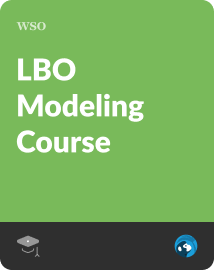Iranian Rial (IRR)
The official currency of Iran
What is Iranian Rial (IRR)?
The Iranian Rial is the official currency of Iran. It was first introduced in 1798 as a coin worth 1,250 dinars. In 1825, the Rial was no longer in circulation and was replaced by the Qiran. Later in 1923, the currency was again introduced and traded at a rate of 1 Rial = 1 Qiran.
Currently, Iran has three exchange rates; the NIMA rate, the open market rate, and the official rate.
NIMA is the Persian acronym for an online currency system launched by the Central Bank of the Islamic Republic of Iran (CBI) in April 2018. It's also a market where Iranian exporters can sell their foreign currency earnings for Iranian Rials.
It is important to note that the NIMA places a higher value on the currency than the open market rate. It also ensures that the CBI has enough foreign currency to pay for imports of food, medicine, and other humanitarian goods in an instance where the Irian currency rapidly depreciates.
The exchange rate system accurately reflects how many Iranian currencies are needed to buy one US dollar. It is the most accessible and commonly quoted rate throughout the country. It stabilized in the last three months, and around 130,000 Rials are now fetching $1.
Over recent years, the Iranian currency has been declining in value which has resulted in a rising cost of living, rising unemployment, and a decline in economic growth. Even though the CBI has been implementing a series of measures, it has failed to reach its target of stabilizing the currency.
It is, therefore, essential to undertake a thorough analysis of the factors impacting the currency, both external and internal, to be in an excellent position to come up with an effective solution for its declining currency.
Iranian Rial's weakening value
Whenever we talk about the exchange rate and international finance, it's always fascinating to question what is the lowest valued currency in the world.
While the answer to this question keeps changing based on many market fluctuations, we can say that the Zimbabwe currency was once at the top spot.
Zimbabwe's currency situation was so bad that they were printed in denominations of trillions, whereby one hundred trillion Zimbabwean dollars translated into just 15 USD.
The only option was to abandon the use of their currency and adopt more comprehensive currencies like the US Dollar and the Euro to recover the economy.
Given that the Zimbabwean Dollar has ceased to exist, the Iranian currency has unfortunately inherited this undesirable mantle of being the lowest valued currency in the world despite holding 10% of the world's oil reserves and having the largest resource of natural gas in all of the Middle East.
Certain elements such as the country's political instability, Islamic revolution, nuclear program, and the US's withdrawal can explain why the Rial's value has weakened to such a large extent.
1. Political Instability
A prominent reason why the Iranian currency is valued the lowest in the world can be explained by the fact that Iran as a country is in turmoil, and this situation keeps on going. Political instability in Iran has turned into a severe economic crisis.
The poor political situation has made Iran a less attractive destination for investors to come and invest in any major projects.
2. Islamic Revolution
While the country struggled economically for several years, the currency has been facing a constant decline since the Islamic revolution, which led to Iran having no choice but to deal with a massive capital flight. The latter lost close to 40 billion USD during the Islamic process.
Iran also found itself suffering from the dutch disease syndrome, an economic theory built around the apparent causal relationship between demand and supply.
This theory is established when it's observed that as a country experiences an increase in the economic development of one of its industries, other industries tend to suffer.
In the case of Iran, as its oil exports grew with time, its other production-based economies started losing their competitiveness.
3. Nuclear Program
In the 90s, Iran decided to develop its nuclear program, leading the United Nations Security Council to interfere to stop its progression.
Nevertheless, since the country ignored those warnings, aggressive sanctions were placed against the Islamic republic to deter them from developing a nuclear program.
Analysis of the NIMA Exchange
The currency has hit a historical rock bottom against the US dollar, adding to the perception that the country is in the throes of an impending economic crisis.
Nevertheless, the most concerning figures for the Iranian policymakers are yet to make the headlines. The record low IRR 215,000 to the dollar doesn't fully elaborate on the proper health of its economy.
One of the rarely-mentioned introductory rates is the one available on the NIMA exchange. The latter is a centralized electronic system that the Central Bank of Iran introduced in 2018 to simplify the purchase and sale of foreign exchange by Iranian-based companies.
This system provides export currency to importers of goods and services. The price of Nima currency is much higher than the government currency and slightly lower than the free-market price. Every dollar is exchanged in the Nima foreign exchange market for around 240,000 rials.
Since the NIMA exchange began its operation in the fourth quarter of 2019, inflation, as measured by the consumer price index, has been mainly tracking the NIMA rate compared to the free market rate.
The NIMA rate provides a better reflection of the price at which most foreign currency is bought and sold in Iran and crucially reflects the price at which Iranian companies purchase foreign exchange to cover the cost of imported goods.
Factors Affecting Iranian Rial
Some of the factors are:
A) Political Factors
1. International Security
Iran has not yet recovered from the post-war effects of the famous Gulf war. The heavy economic sanctions imposed on Iran by the United Nations and the US government as a consequence of the stance of Iran on the war can still be felt in present times.
Those UN and US sanctions ban Iranian exports of petroleum products to the European Union countries and the US itself. This aimed to considerably reduce Iran's participation in international trade, prompting the nation to abandon its famous nuclear plan.
In the Middle East, Iran is one of the nations with the most influence on determining the state of world peace and security. Its government has constantly been focusing on defending its nuclear war/ weapons policies, which is also an extremely high venture to its finances.
As a result, the amount spent on the nuclear installation has harmed the country's finances, further lowering its currency's value.
2. Democracy and Constitution Reforms
For a long time, Iran was a single-party theocratic government until after constitution reforms, which enabled multiparty representations.
Political alliances that stood up against the current Iranian regime included the People's Fedayeen, Mojahedin-e-Khalq, and the Kurdish Democratic Party.
The new structural reforms come with additional costs, eventually increasing the national budget and worsening inflation. This increase in inflation rate thereby translates into an increase in the Iranian currency against the US Dollar.
B) Economic Factors
1. Dependence on Oil and Gas Export
Iran's economy is highly dependent on oil and gas exports, making it vulnerable to the instability caused by the constantly shifting price of crude.
Consequently, it tends to believe in the elusive hypothesis based on the economic forecast that the price of oil will always be stable.
2. Privatization of Foreign Exchange
Iran's foreign exchange was state-owned for a long time until after its elections, when President Ahmedinejad devised plans to privatize its foreign exchange to decentralize it. However, it eventually led to a decline in the Tehran Stock Exchange's performance and encouraged private owners to get involved in black market practices.
Coupled with the black market, money laundering also gained popularity. These unethical practices skyrocketed Iran's exchange rate hence accentuating its inflation level.
Moreover, import expenses increased as businesses favored the black market for currency exchange. This eventually reduced the stock of US dollar reserves in formal financial institutions. In that situation, Financial institutions had no alternative but to sell US dollars at higher rates due to high demand and low supply.
Exports also declined as the financial institutions used standard rates lower than the black market rates. This ultimately lowered the gross domestic product of Iran as well as its government's financial strength.
Iranian Rial (IRR) FAQs
It officially stands at 42,214 IRR.
A Few of the items which can be bought are:
- Take a taxi
- Buy some books
- Eating a nice chicken salad in a Cafe
- Buy Iranian souvenirs
- Have a Faloode
The Iranian currency is the most minor valued currency currently.
Living cost in Iran is 528% higher compared to India.
According to the Central Bank of Iran, the value of one square meter of an average unit in Tehran currently stands around 84,000,000 rials, equaling approximately $2,000/ Sq.
The Iranian Toman is a super unit of the official currency of Iran-the Rial. To put into perspective, one Toman equals 10 rials.
42,173 Iranian Rials
All of Iran's main cities have official money exchanges. In Persian, deals are sometimes referred to as "Sarrafi." For example, in Ferdowsi Square in Tehran, there are a lot of businesses.
No, Iran doesn’t have access to the international banking system. International credit facilities such as Visa or Master Cards are not widely used in the country.
Foreigners must rely on cash or Iranian debit cards when purchasing from shops, restaurants, and other places such as public transport.
Researched and authored by Alvin Dookhony | LinkedIn
Free Resources
To continue learning and advancing your career, check out these additional helpful WSO resources:




or Want to Sign up with your social account?